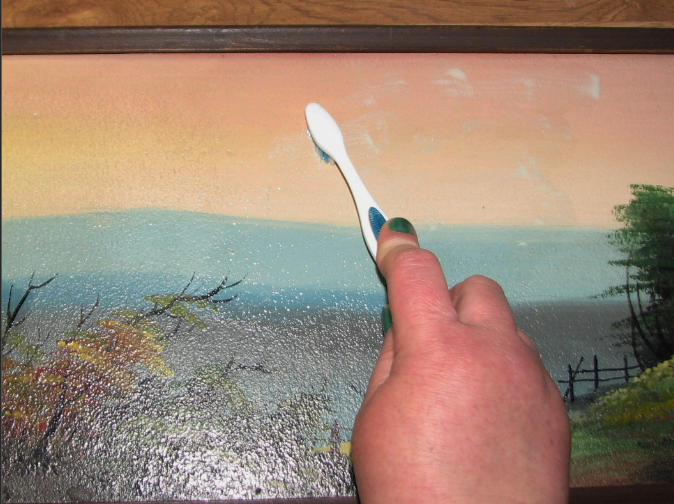
Painting: A Journey Through Colors and Emotions
In a world filled with diverse forms of artistic expression, painting remains one of the most captivating and time-honored methods of visual storytelling. The strokes of a brush on a canvas can evoke a range of emotions, from joy and admiration to introspection and contemplation. This article takes you on a fascinating journey into the world of painting, exploring its history, various types, techniques, and the impact it has on our lives.
Introduction to the World of Painting
Painting is a visual art form that utilizes various pigments, colors, and techniques to create images on a flat surface. It is a medium of expression that has been cherished for centuries, captivating the hearts and minds of art enthusiasts worldwide. This article delves deep into the realm of painting, unraveling its intricate layers and the profound impact it has on our lives.
The Historical Evolution of Painting
The history of painting is a tapestry woven with the threads of artistic revolutions and cultural changes. From the ancient cave paintings of Lascaux to the Renaissance masterpieces of Leonardo da Vinci, painting has evolved over the millennia, reflecting the spirit and innovation of its time.
The Various Types of Painting
A. Oil Painting
Oil painting, known for its rich colors and depth, is a classic form of art that has been cherished for centuries. Artists like Rembrandt and Van Gogh are celebrated for their mastery of this technique.
B. Watercolor Painting
Watercolor painting, with its transparency and delicate touch, offers a unique way of capturing the world’s beauty. This technique is often used for landscapes and portraits.
C. Acrylic Painting
Acrylic painting is a versatile and vibrant medium that has gained popularity for its quick drying time. It allows artists to experiment with various styles and textures.
D. Pastel Painting
Pastel painting uses soft, powdered pigments to create delicate and expressive artworks. It is beloved for its ability to convey emotions through color.
E. Digital Painting
In the age of technology, digital painting has emerged as a modern and dynamic art form. Artists use software and digital tools to create stunning visuals.
Essential Painting Supplies
A. Brushes
The choice of brushes is crucial in determining the texture and style of your painting. From fine detail brushes to broad strokes, each brush serves a specific purpose.
B. Canvas
The canvas is the foundation of your artwork. Different surfaces, such as stretched canvas and paper, offer diverse textures and effects.
C. Paints
Choosing the right paints, whether oil, watercolor, or acrylic, is essential. High-quality pigments enhance the vibrancy and longevity of your masterpiece.
D. Easels
Easels provide the necessary support and angle for your canvas while you work. They come in various styles and sizes to suit your needs.
E. Other Accessories
Additional accessories, such as palettes, painting knives, and solvents, are essential for the painting process.
Techniques and Styles in Painting
The world of painting is vast, offering a plethora of techniques and styles for artists to explore. Let’s delve into a few prominent ones.
A. Realism
Realism aims to capture the subject with meticulous detail, often blurring the line between the painted and the real.
B. Impressionism
Impressionism focuses on capturing the fleeting moments of light and color, creating atmospheric and emotional scenes.
C. Abstract
Abstract painting relies on shapes, colors, and forms to convey emotions and ideas without a concrete subject.
D. Cubism
Cubism deconstructs subjects into geometric shapes, offering a unique perspective on reality.
The Importance of Color Theory
Color theory is the backbone of painting. Understanding how colors interact and evoke emotions is crucial for creating impactful artworks.
Famous Painters and Their Masterpieces
Throughout history, artists have left an indelible mark on the world with their masterpieces. Let’s explore a few iconic painters and their celebrated works.
A. Leonardo da Vinci and the “Mona Lisa”
Leonardo da Vinci’s “Mona Lisa” is an enigmatic masterpiece that continues to captivate art lovers worldwide.
B. Vincent van Gogh and “Starry Night”
Van Gogh’s “Starry Night” is a swirling masterpiece that captures the turbulence of the artist’s mind.
C. Pablo Picasso and “Guernica”
Picasso’s “Guernica” is a powerful anti-war statement, showcasing the artist’s avant-garde approach.
The Psychology of Art and Emotions
Art has the remarkable ability to stir emotions and provoke thought. Understanding how art influences our feelings is a captivating journey of its own.
The Process of Creating a Painting
Creating a painting involves a series of steps, from conceptualization to the final strokes. Each stage is a unique journey of creativity.
Tips for Aspiring Painters
For those aspiring to become painters, there are several key tips and practices to keep in mind as you embark on your artistic journey.
The Role of Art Galleries and Exhibitions
Art galleries and exhibitions play a crucial role in showcasing artists’ work, connecting them with art enthusiasts, and fostering the art community.
The Contemporary Art Scene
The contemporary art scene is a dynamic landscape of innovation and experimentation. It constantly pushes the boundaries of what art can be.
The Impact of Technology on Painting
Technology has revolutionized the art world, offering new tools and platforms for artists to express themselves.
The Therapeutic Benefits of Painting
Painting is not just an art form; it can also be a therapeutic outlet, providing solace and healing for those who engage in it.
Conclusion
In conclusion, painting is a timeless form of artistic expression that has transcended generations and cultures. It weaves stories, conveys emotions, and invites viewers into the world of the artist’s imagination. Whether you are an artist or



